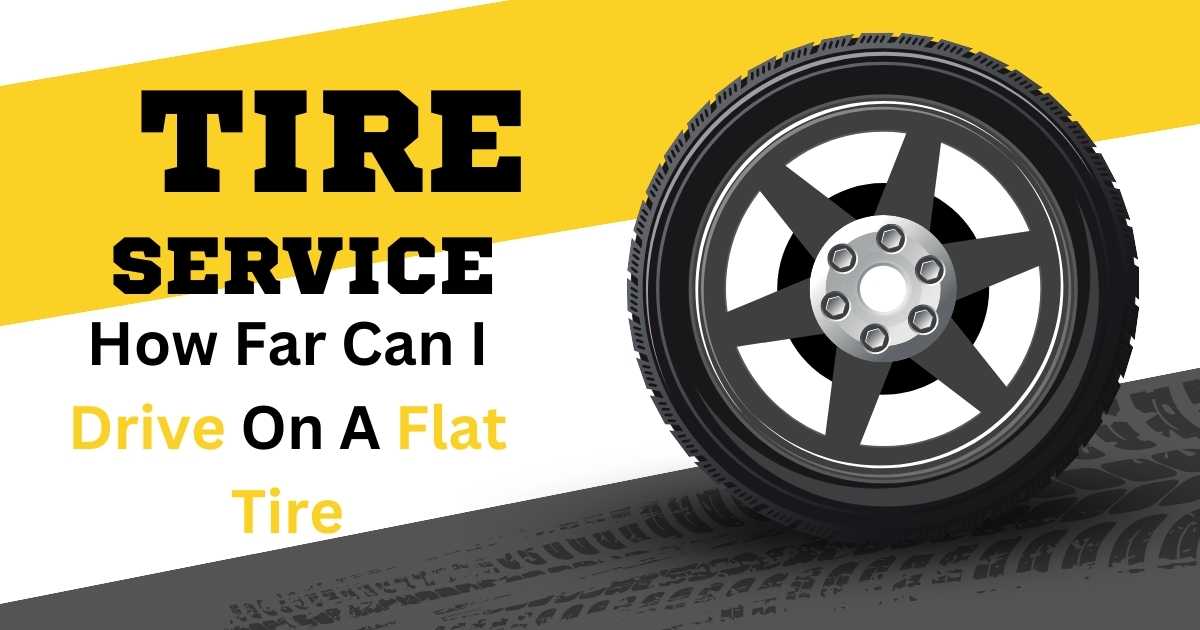How Far Can I Drive On A Flat Tire: Let’s be honest, getting a flat tire is a real pain when you’re driving. You hear that awful thumping sounds, you pull over feeling awful, and there it is – a flat tire. Now comes the big question: Can you keep driving on it, or do you have to stop?
Well, it’s not a straightforward yes or no answer, unfortunately. It depends on the type of tire you have and how comfortable you are with taking risks. Here’s some info to help you figure out what to do when you get a flat tire:

How Far Can I Drive On A Flat Tire
Standard Tires: Don’t Push Your Luck
Here’s why you should try to drive as little as possible on a standard flat tire:
Safety First: When your tire goes flat, it messes up how your car handles. The flat tire makes it harder to steer and increases the chances of losing control, especially if you’re going fast.
Rim Damage: Think of your tire as a shield for the wheel rim. Driving on a flat tire means the rim scrapes against the road directly, which can mess it up permanently. Fixing or replacing a damaged rim costs a lot more than fixing a flat tire.
Risk Of A Blowout: The side of your tire is its weak spot. Driving on a flat tire puts a ton of stress on this part, making it more likely to blow out completely. That’s really dangerous and could cause you to lose control or have ab accident.
Do I Need An Alignment With New Tires
So, How Far Is Safe To Drive On A Flat Tire?
Even though you might really want to get to the closest gas station, it’s important to stay safe. Here’s what you should do:
Pull Over Right Away: This is the safest thing to do. Try to find a flat, solid area away from traffic.
Drive Slowly For A Short Distance: If you need to move, try to go less than a mile at really slow speeds, like under 20 miles per hour. This way, you can get to a safe place or a parking lot nearby.
Run-Flat Tires: A Limited Lifeline
Run-flat tires can be helpful in a tough situation These special tires are made with extra strong sides that let you keep driving for a bit (usually up to 50 miles) at lower speeds (usually under 50 mph) even if you have a puncture. But remember, it’s just a temporary fix, not a p permanent solution. Here’s why:
Temporary Solution: Even with a run-flat tire, driving too long with a puncture can still mess up the tire inside.
Watch Your Speed: Stick to the slower speeds they recommend. Run-flat tires aren’t meant for driving fast when there’s no air in them.
Get Help Quickly: It’s important to find a good repair shop that knows how to deal with run-flat tires. Not all tires shops can handle them properly.
The Bottom Line: Be Prepared, Not Desperate
The best way to avoid a flat tire is to be proactive:
Check Your Tires: Keep an eye on your tire pressure and look for any damage regularly.
Ready Spare Tire: Make sure your spare tire is filled up and easy to get to. It’s important to know how to change a tire if you need to.
Get Help If You Need It: Think about joining a roadside assistance program. They can help fix flat tires or tow you if needed.
Remember, it’s better to take a few extra minutes to change a tire safely than to risk a big problem or danger. So, be prepared, not stressed, and your next flat tire won’t be a big deal.